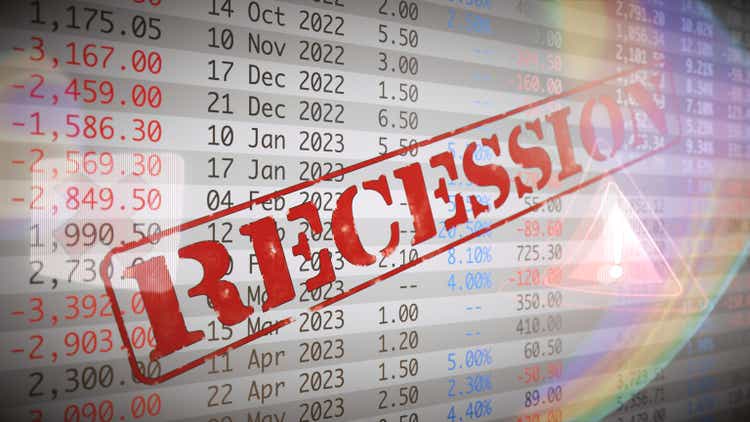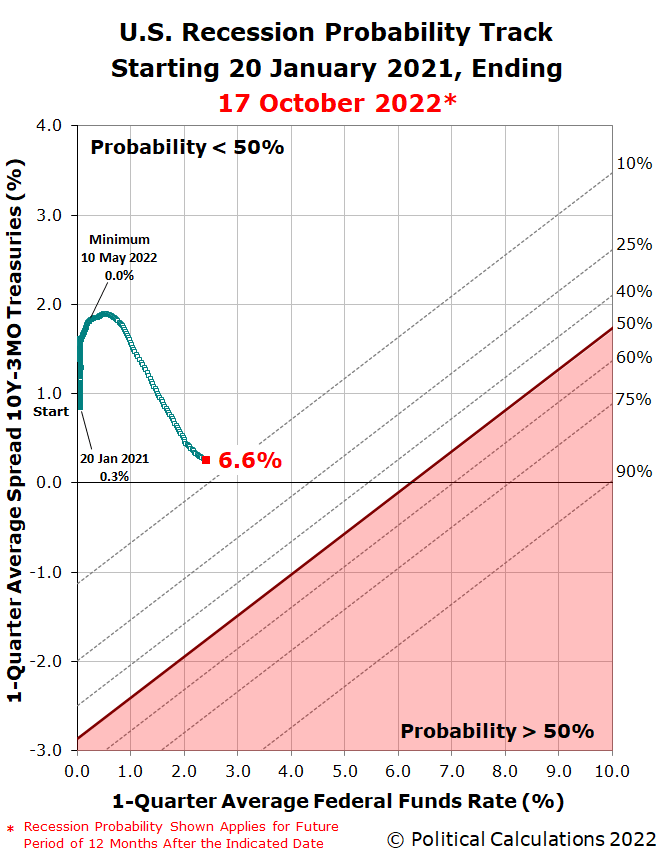matejmo
When will the National Bureau of Economic Research find the U.S. economy went into recession?
That may seem like a strange question to ask, considering that the U.S. economy shrank in two consecutive quarters earlier in 2022, which qualifies as a “technical recession“. That is a definition the U.S. government has previously coded into law to permit the U.S. Congress to fast-track a fiscal response when recessions are still developing.
But it’s not the definition used by the NBER’s academic economists, whose jobs do not require them to make policy decisions that affect people’s lives when it matters. Instead, they’re concerned with finding the tops and bottoms of business cycles in the national economy, which can take them a year or longer to identify after the fact.
Fortunately, there are tools we can use to determine what the probability is that the NBER will find a particular point of time marks both the end of a rising business cycle and the beginning of a national recession. One of those is the Recession Probability Track, which visually illustrates how that probability changes over time. For its 2022 return, we’ve set it to start from 20 January 2021 to show how the likelihood of an NBER recession declaration has evolved during President Biden’s tenure in office:
Author
The Recession Probability Track is based on Jonathan Wright’s yield curve-based recession forecasting model, which factors in the one-quarter average spread between the 10-year and 3-month constant maturity U.S. Treasuries and the corresponding one-quarter average level of the Federal Funds Rate. If you’d like to do that math using the latest data available to anticipate where the Recession Probability Track is heading, we have a very popular tool to do the math!
As of 17 October 2022, the Recession Probability Track indicates a 6.6% probability of recession, or rather, roughly a 1-in-15 chance the NBER will identify a month between October 2022 and October 2023 as the peak from which a recession in the U.S. began.
That probability may seem low, but our previous series featuring the Recession Probability Track peaked with an 11.3% probability of a recession starting sometime between September 2019 and September 2020. Ultimately, it wasn’t how the Fed was setting interest rates or the spread between 10-Year and 3-Month treasuries that threw the U.S. into recession, but rather policy actions by California Governor Gavin Newsom mandating the country’s first statewide COVID lockdown that threw the U.S. economy immediately into recession during March 2020.
It only took the NBER’s analysts three and half months after that event to identify February 2020 as the peak of the preceding business cycle and Month 0 of the Coronavirus Pandemic Recession. You can see why their determinations are not what anyone in positions of responsibility should rely upon when policy decisions about how to respond to developing recessions need to be made.
Instead, it’s much more useful to follow what CEOs or professional forecasters are saying. Right now, they’re giving much higher odds of a recession taking hold in the next 12 months than Wright’s more slow-moving forecasting method.
Editor’s Note: The summary bullets for this article were chosen by Seeking Alpha editors.


Be the first to comment